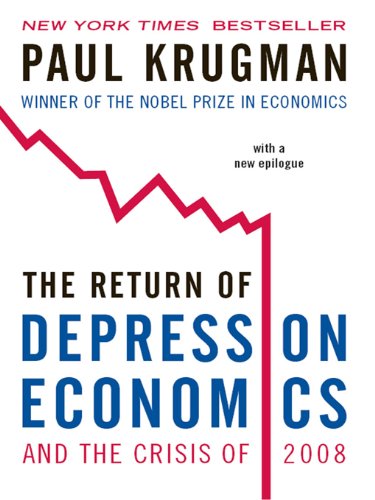Will Big Business Destroy Our Planet?, Peter Dauvergne, polity, 2018, pp. 139, $15.95, ISBN 978-1-5095-2400-6
The Earth system is in crisis. Summer after summer, we are confronted with unprecedented temperatures that warm up the seas, leading to ever stronger and more destructive winds which fuel raging forest fires and destroy lives. Fish stocks are collapsing and the plastics that float in the oceans affect the migratory bird population. Industrial development releases effluents that leach into aquifers. Sixty percent of primate species are heading towards extinction by the middle of this century. Peter Dauvergne’s latest book asks the question: who is to blame? Given the devolution of governance to private entities, who are likewise the agents of economic development that produces the environmental crisis, could it be the big business?
If we were to judge solely by the response of CEOs of global transnational corporations (TNC) such as Coca-Cola, who claim that “sustainability is the pivot for where we want to go”, or PepsiCo’s responsibility to “make a difference in the world” (p.3), the answer would be no. Peter Dauvergne traces the origins of the rising power of big business to the post World War II explosion. Indeed, the transnational businesses in the past have often been associated with global imperial expansion. British East India Company was founded in 1600, the Dutch East India Company in 1602 and the Dutch West India Company in 1621, while the French East India Company came into existence in 1664. All of these, alongside Hudson’s Bay Company (1670) plundered the globe in search for slaves, spices, cotton, silk, tea, timber, furs, gold, silver and opium, while in the meantime spreading influenza and decimating local populations. However, modern TNC emerged at the beginning of the 20th century. In 1929, the soap making Lever Brothers merged with Margarine Unie to form Unilever, largest ever merger at the time. This was also the period of revolution in production, known as Fordism, which automated production and aimed to generate profit through mass production at lower prices. For example, between 1906 and 1927, production of Ford’s Model T reached 15 million. After the War, TNCs multiplied. McDonald’s Corporation emerged, which was to influence people’s dietary cultures together with Subway, KFC, Burger King, and Pizza Hut; Walmart, following in the footsteps of Henry Ford, opened its doors to customers in 1962 in Arkansas, and is now available globally, its revenues being $170 billion ahead of the world’s second-largest company. These corporations crept into our lifestyle through aggressive advertising and subjugation of competition. They manufactured necessities by altering our desires.
With the growth of the TNC, the wealth of their owners and shareholders increased and grew increasingly concentrated. Their wealth bought political influence and by extension created dependencies that led to the corporatization of non-governmental organizations. It comes as no surprise to see big brands such as Coca-Cola or Walmart appear as main sponsors of prominent NGOs, despite their history in surprising unions and offering survival wages. As their economic and political power increased, the TNCs were pushed to balance their promise to shareholders with the public demands to contribute to social well-being by changing their practices. At this point, the notion of Corporate Social Responsibility (CSR) developed, which aimed to provide a win-win-win situation (p.39). It is largely a public relations strategy aimed at placating criticism while changing practices in so far as they do not conflict with the core aims: growth and profit. Dauvergne turns to the concept of ‘eco-business’, which he developed with Jane Lister in their book ‘Eco-business’, and it involves “putting in place tighter controls to manage risks and uncertainties within global supply chain” (p.43). Risks in this way are seen as a risk to potential profits, which may come as a result of a negative public image. Thus by pursuing activities that seemingly address environmental sustainability and ethics in the way the TNC operates, the TNC appeals more to the concerned consumer, while at the same time making itself more competitive. Interestingly, however, the very same companies that seek approval are the companies behind organizations such as the Forest Stewardship Council, the Marine Stewardship Council and the Roundtable on Sustainable Palm Oil, which certify products based on their codes of standard. Elsewhere in the book, Dauvergne compares such practices to trusting arsonists to be our firefighters.
Rightly so, because those very businesses are complicit in global tax evasion schemes, such as Apple’s outpost in Ireland which siphoned off profits while paying a 0.005% tax for which it was fined $14.5 billion. Tim Cook did not take the news lightly. Google’s and Microsoft’s monopolistic behavior in the EU follow the same logic, with the same consequences. And yet, Google was voted to be the most responsible company in the world 3 years in a row. More often than not, the consequences are not merely social, but environmental too. Volkswagen’s cheating on diesel emission testing contributed to the pumping of carbon dioxide into the atmosphere, while BP’s oil spill affected wildlife and coastal communities alike. These ‘externalities’ are the natural by-products of the very structure of the business, but are not addressed as such. They are merely seen as behavioral issues, accidents due to negligence.
In the concluding chapter, Dauvergne arrives at the surprising answer to his initial question. The answer is…no. The big business will not destroy our planet. He suggests that “big business self-preservation will prevent total destruction” (p.97). Dauvergne relies on the notion of efficiency, the fact that businesses constantly devise newer and more efficient ways to manufacture, transport and dispose of their goods. One just needs to counter that proposal with Jevons’ paradox. In 1865, Jevons observed that “it is wholly a confusion of ideas that the economical use of fuel is equivalent to a diminished consumption. The very contrary is the truth” (1866, p. 123). As Jevons observed, as the efficiency of a resource improves, the total consumption of that resource increases. Dauvergne’s hopes also ultimately rest on the idea that achieving complete decoupling of growth from its material base is possible. This would result in growth proceeding unhindered, while the environment stays undamaged. Dauvergne does not analyze the systemic logic of capitalism – the fact that it relies on both nature and labor in the production of surplus value. As such, commodities that it spews out contain embodied resources and labor. These are unequally spread throughout the world, and may even be classified as ‘ecological shadows’, in the words of Dauvergne. This reveals the method of his analysis which treats business and markets in the abstract, disembodied from the social and economic relationships.
Dauvergne’s faith in the environmental movements is the 2nd reason for his negative answer to the question at hand. However, his hopes are placed in technological innovations, rather than changes in the system. He states that “buildings are meeting higher water, waste, energy and emission standards” (p.101), that “highways are more durable and road construction does more to account for habitat disruption” (ibid), while the pollution decreases in more “well-off cities” such as London. This amounts to technological fetishism, a testament to the difficulty of distancing ourselves from the Cartesian logic which portrays the social realm as separate from the material. Technology is nothing more but another strategy of capital accumulation which rests on the unequal exchange of resources. It is perhaps not a coincidence that Dauvergne uses London as an example of environmental improvement? He acknowledges this when he states that “when governments and firms are claiming to be solving a problem they are in fact deflecting the problem into another jurisdiction or into the future” (p.105), which makes his conclusion all the more confusing and contradictory.
Dauvergne places too much faith in a technological fix and essentially corporate morality, despite his accepting Bakan’s assertion that corporations are pathological organizations. The book is a wrong step in the right direction. It illuminates the double standards inherent in corporate sustainability efforts, but ultimately endows arsonists with fire trucks.




